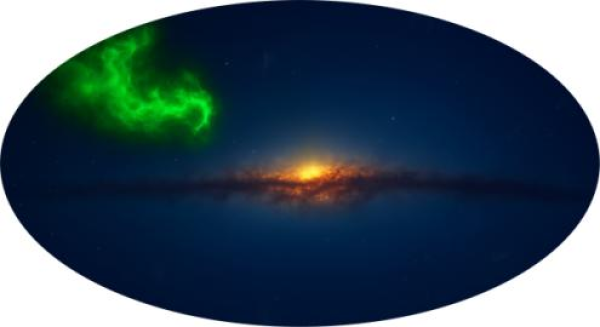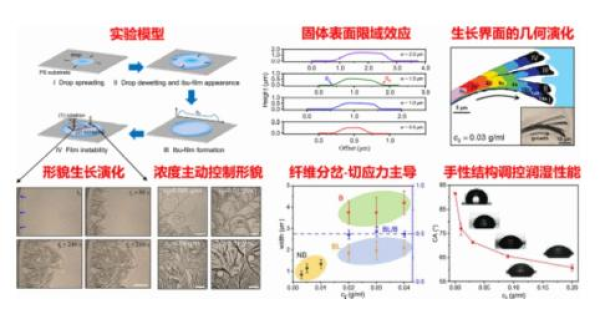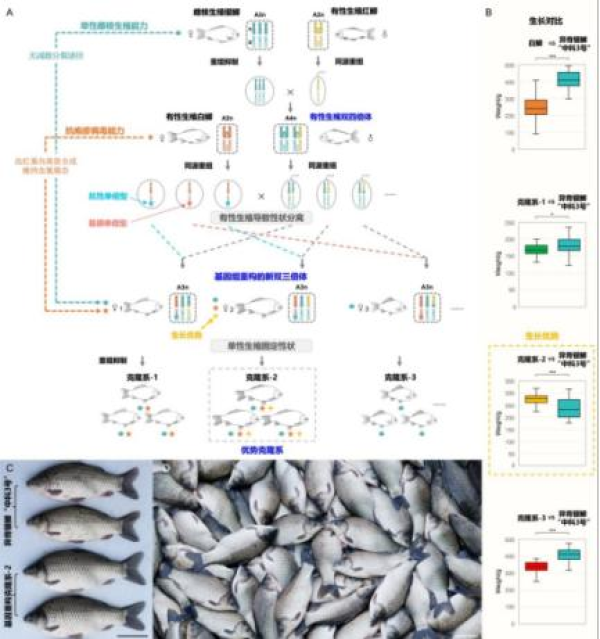Weekly Advanced Technologies〔82〕

Weekly Advanced Technologies〔82〕丨FAST Unravels the Chaotic Origins of Cosmic Filament Gas Clouds; The Gravity of Sight: Earth's Pull Influences How We See the World
In the vast expanse of the universe, stars emerge from turbulent interstellar gas clouds. The fundamental question of how these disordered gases evolve into organized stellar nurseries continues to challenge astronomers. A groundbreaking discovery using China's Five-hundred-meter Aperture Spherical radio Telescope (FAST) has revealed intricate, turbulence-governed filaments in a high-velocity molecular cloud at our galaxy's periphery, providing unprecedented clues about the initial phases of interstellar medium evolution.
Earth's gravity has shaped human evolution so profoundly that its influence often goes unnoticed. Emerging research now reveals this fundamental force may actively mold visual perception. The brain appears to harness gravitational experience as a built-in reference, sharpening detection of natural motion patterns—demonstrating how deeply physical laws intertwine with cognitive processes.
Based on the weekly diary of technology provided by the daily list of the NCSTI online service platform, we launch the column "Weekly Advanced Technologies" at the hotlist of sci-tech innovation. Today, let's check out No.82.
1. Nature Astronomy丨FAST Unravels the Chaotic Origins of Cosmic Filament Gas Clouds

Schematic representation of G165-type high-velocity cloud morphology highlighting turbulent filament networks
The Shanghai Astronomical Observatory of the Chinese Academy of Sciences, in collaboration with domestic and international research teams, has for the first time clearly observed a complex network of filamentary structures within an extremely high-velocity gas cloud named G165 located in the outer region of the Milky Way, approximately 50,000 light-years from Earth. This observation was achieved using the Five-hundred-meter Aperture Spherical radio Telescope (FAST). The gas cloud is primarily composed of warm neutral hydrogen with almost no cold gas content, exhibiting pronounced supersonic turbulence characteristics, where local velocity fluctuations exceed 20 kilometers per second.
Unlike typical high-velocity clouds, G165 is isolated far from the Galactic disk with minimal disturbances, making it an ideal laboratory for studying the early evolution of interstellar medium. Leveraging FAST’s unparalleled sensitivity, researchers uncovered unprecedented details: its multi-layered velocity structure harbors a three-dimensional network of twisted gaseous filaments, exhibiting asymmetric density distribution and clear signatures of shock compression and intense turbulence.
To investigate its origin, researcher LI Beicheng employed the self-developed numerical simulation tool ORION2. Simulations demonstrated that supersonic turbulence—amplified by magnetic fields—can produce the observed structures without gravitational influence. This suggests turbulence and magnetic fields may dominate structural formation in early-stage interstellar clouds. The findings provide critical evidence for understanding gas organization, matter cycling, and star-formation origins in the Galactic outskirts, while pioneering new approaches to explore structure formation in non-gravity-dominated cosmic environments.
2. npj Microgravity丨The Gravity of Sight: Earth's Pull Influences How We See the World
The Shanghai Astronomical Observatory of the Chinese Academy of Sciences, in collaboration with domestic and international research teams, has for the first time clearly observed a complex network of filamentary structures within an extremely high-velocity gas cloud named G165 located in the outer region of the Milky Way, approximately 50,000 light-years from Earth. This observation was achieved using the Five-hundred-meter Aperture Spherical radio Telescope (FAST). The gas cloud is primarily composed of warm neutral hydrogen with almost no cold gas content, exhibiting pronounced supersonic turbulence characteristics, where local velocity fluctuations exceed 20 kilometers per second.
Unlike typical high-velocity clouds, G165 is isolated far from the Galactic disk with minimal disturbances, making it an ideal laboratory for studying the early evolution of interstellar medium. Leveraging FAST’s unparalleled sensitivity, researchers uncovered unprecedented details: its multi-layered velocity structure harbors a three-dimensional network of twisted gaseous filaments, exhibiting asymmetric density distribution and clear signatures of shock compression and intense turbulence.
To investigate its origin, researcher Li Beicheng employed the self-developed numerical simulation tool ORION2. Simulations demonstrated that supersonic turbulence—amplified by magnetic fields—can produce the observed structures without gravitational influence. This suggests turbulence and magnetic fields may dominate structural formation in early-stage interstellar clouds. The findings provide critical evidence for understanding gas organization, matter cycling, and star-formation origins in the Galactic outskirts, while pioneering new approaches to explore structure formation in non-gravity-dominated cosmic environments.
The research team led by JIANG Yi at the Institute of Psychology, Chinese Academy of Sciences, recently revealed through a series of experiments that the human brain can automatically utilize prior knowledge of Earth's gravity to significantly enhance the perception of complex motion patterns.
The study innovatively incorporated gravitational acceleration cues into the classic "motion coherence perception" task, examining participants' ability to detect global motion signals from random noise under both natural (1g) and inverted (−1g) gravity conditions. Results demonstrated that the brain consistently showed superior recognition of motion patterns aligned with natural gravity effects—regardless of whether background noise contained acceleration, the duration of dot presentation, or whether stimuli were displayed on screens or in real-world scenarios.
This discovery extends gravity's influence on visual processing from individual object trajectory estimation to complex global motion scene recognition, demonstrating that the human brain has internalized Earth's gravitational cognition as a stable "embedded model" serving as an anchor point for perceptual processing. The findings deepen our understanding of how human perception adapts to Earth's environment while providing theoretical foundations for investigating potential sensory alterations during long-term space habitation.
3. Nature Communications丨Breaking the Chirality Barrier: A Controllable Assembly Strategy for Chiral Supramolecular Architectures

Instability-Driven Multilevel Chiral Self-Assembly Strategy
Chiral supramolecular assemblies exhibit unique physicochemical properties with broad applications in optoelectronics, biomedicine, and biomimetics. However, achieving controllable construction of multilevel chiral architectures at macroscopic scales remains a scientific challenge. Recently, the team led by YUAN Quanzi at the Institute of Mechanics, Chinese Academy of Sciences, in collaboration with SHI Xinghua’s group at the National Center for Nanoscience and Technology, proposed a novel "destabilization-enabled" strategy. They successfully fabricated macroscale supramolecular structures with mesoscopic order and micro/nano-scale chirality on solid surfaces and elucidated the underlying formation mechanisms.
In this study, researchers induced destabilization in supramolecular thin films through external mechanical perturbations, driving the reorganization of disordered molecules into ordered chiral architectures composed of left/right-handed fibers and lamellar crystals. Concurrently, they developed a two-dimensional thin-film theoretical model to achieve dynamic visualization and control of the chirality formation process. The research revealed that interfacial effects, geometric constraints, mass transport, and mechanical instability collectively govern the emergence and evolution of chiral structures. Further experiments demonstrated that these chiral architectures can effectively modulate surface wettability, enabling active control of liquid contact angles. This work has not only uncovered new mechanisms of chiral generation and cross-scale transmission in supramolecular systems but also provided novel strategies for designing and scalable fabrication of functional chiral materials.
4. Advanced Science丨From Fin to Fry: Closing the Genetic Recombination Gap

The research team led by Academician GUI Jianfang from the Institute of Hydrobiology, Chinese Academy of Sciences, innovatively employed the transition between unisexual and sexual reproduction to construct genomically restructured polyploid crucian carp (Carassius auratus). This breakthrough provided technical support for breeding the disease-resistant, high-yield "Zhongke No. 6" (officially designated "CAS-6 Crucian Carp").
The research team utilized "Zhongke No. 3" (officially designated "CAS-3 Crucian Carp") as the maternal base, introducing the paternal genome from red crucian carp (Carassius auratus red var.) to engineer a sexually reproductive tetraploid (4n) male. This hybrid was further crossed with herpesvirus-resistant white crucian carp (Carassius cuvieri), generating restructured diploid-triploid (2n-3n) hybrids.
The study identified female fish with superior growth traits and utilized their restored gynogenetic reproduction capability to establish three clonal lines through hybridization with Xingguo red carp (Cyprinus carpio var. Xingguo). Experimental results showed: Clonal Line-1 exhibited 100% disease resistance, Clonal Line-2 showed partial resistance, while Clonal Line-3 and "CAS-3 Crucian Carp" suffered complete mortality. Genetic analysis revealed disease resistance was associated with a specific haplotype on Chromosome 12B of Carassius cuvieri and was stably inherited via gynogenetic reproduction. Growth comparisons demonstrated Clonal Line-2 exhibited the fastest growth rate, qualifying it as a candidate strain for "CAS-6 Crucian Carp". This breakthrough signifies the advancement of polyploid animal breeding into a precision-designed era of chromosome engineering, where resistance and growth traits can be predictably fixed.